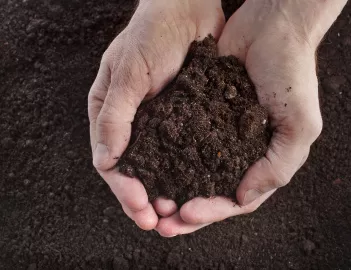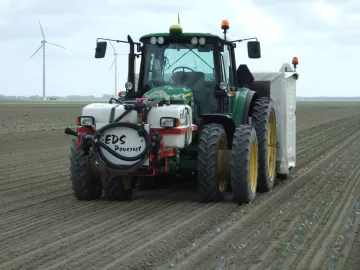Soil & Fertilization
A healthy and fertile soil is crucial to the yield and quality of your product, but how do we create a fertile soil? We need to restore the balance and work on a healthy and fertile soil. We need to deal differently with our soil. Fertilisation is creating optimum conditions for the soil following which the crop can grow on the basis of natural principles. Tweaking those processes is the art of 'fertilisation'! This platform is a source of knowledge and inspiration.
Soil and Crops in Balance

Soil quality
The biological, physical and chemical properties of the soil are important to soil quality. Soil disruptions can cause reduced soil quality.
Chemical soil quality
The chemical soil fertility is largely determined by the presence of macro-elements, the presence of micro-elements or trace elements, the acidity or pH, the salt content or EC (Electric Conductivity) and the Cation-Exchange Capacity or CEC. Read more.
Physical soil quality
Texture, structure, pores and water together determine the physical soil quality. Bearing capacity and penetration resistance are also important physical properties of the soil. Read more.
Biological soil quality
The biological soil quality is determined by rooting, organic matter and underground biodiversity. Water and oxygen are critical factors for the balance and quality of soil life. Read more.

Nutrients
The soil plays an important role in regulating the climate. Increased concentrations of greenhouse gases, such as carbon dioxide (CO2) in the atmosphere, causes climate change. The greenhouse gases work like a blanket, they ensure the earth loses less of its heat. In turn this produces rising sea levels, floods and downpours, but also periods of drought.
The soil produces optimum nutrients when all the processes are in balance. Nutrients can be bound to the clay-humus complex, where nutrients are exchanged by our crops. The measure for this exchange of nutrients is the CEC (Cation Exchange Capacity). A high CEC means more nutrients are bound and the risk of nutrients leaching to deeper soil layers or groundwater is lower than with a low CEC.
Nutrients are also stored in organic matter. Nutrients are released when organic matter with sufficient nutrients is decomposed. Optimising the pH by liming for example, stimulates soil life, more organic matter is decomposed and nutrients can become available to the plant. The moisture condition also determines the release and transport of nutrients to the plant.


